
As a seafood company, both producing in and harvesting from the sea, it is absolutely imperative for the Group to keep the oceans clean and healthy.
We strive to reduce our environmental footprint, minimise our influence on wild habitats including wild salmon stocks.
In aquaculture, we are developing and testing new technology to improve our existing production methods, reducing emissions from our farms and avoiding accidental release of fish from our cages. We have a very good track record in recent years when it comes to accidental release. Our vision is zero accidental release.
We also work continuously to keep the sea free from plastic. We do this through collaboration with our suppliers of equipments, strict monitoring and control of our own production, recycling and recovery of cages from our farms and nets from our trawlers, but also through collecting plastic in the ocean with our trawlers through the “Fishing for Litter”-programme.
In our wild catch segment, we have modernised our trawler fleet with the newest and most modern technology available. We conduct all our catches within the strictest rules governing fisheries management, in close cooperation with the authorities and science.
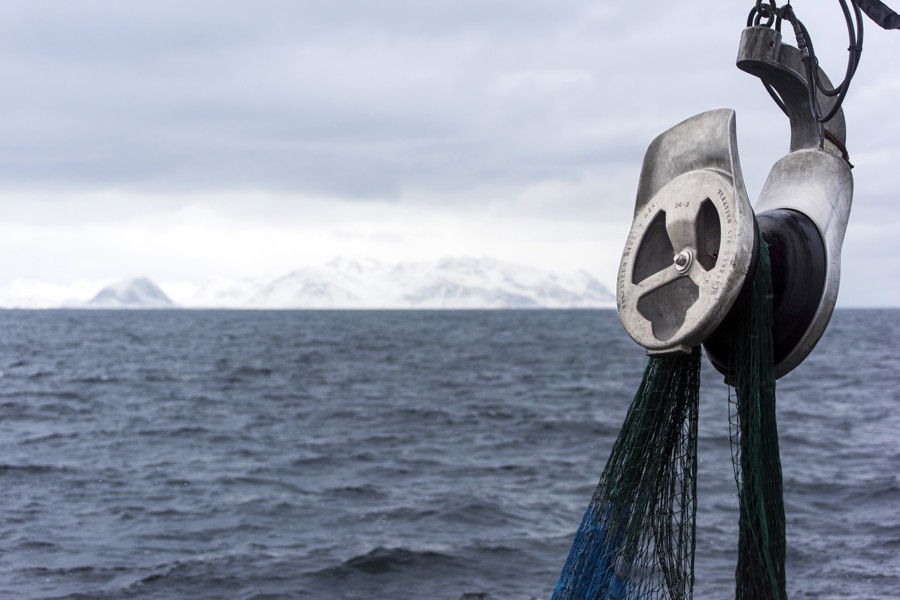
One important tool in the Group’s quality and environmental efforts is certification according to international standards.
Lerøy Seafood Group has been involved in the development of the ASC-standard since 2004. In 2013, Lerøy Seafood Group was the first company worldwide to have a farm certified according to the ASC standard. Since then, numerous Lerøy farms have achieved ASC-certification, ASC-certification guarantee that our aquaculture operations are conducted in an environmentally sound and sustainable manner. Our product handling units (harvest and processing) also undergo audits to ensure traceability for certified products.
The main principles in the ASC standard are:
Lerøy continues to increase the number of certified farms. Moreover, all sites operate in accordance with the requirements that apply in the ASC-standard.
By the end of 2021, 69 % of our production capacity is ASC – certified.
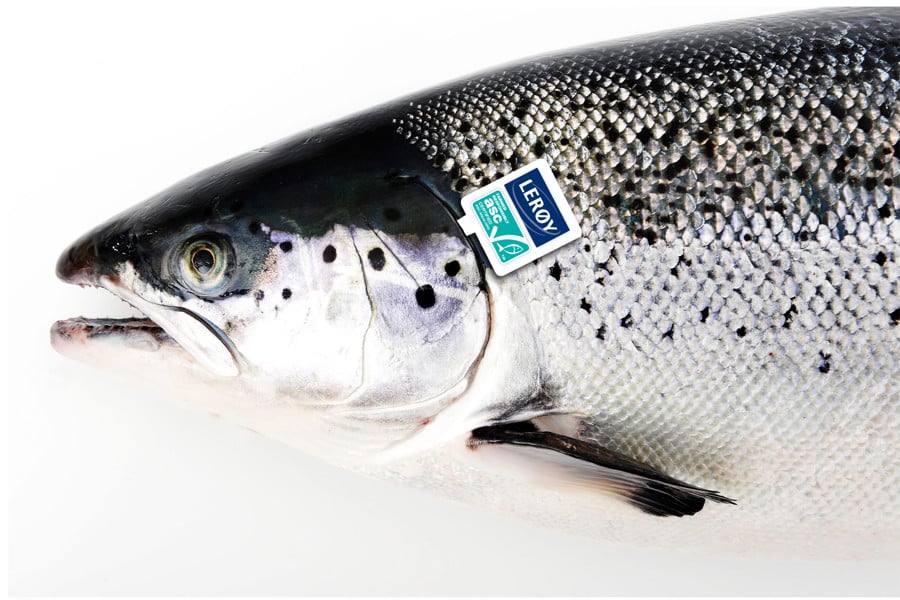
GlobalG.A.P. is a standard that promotes measures that ensure food safety, minimal environmental impact with consideration to the biodiversity, and compliance with animal welfare and workers’ health and safety requirements. The standard covers the production process from roe stage to fish slaughter, and ensure traceability of certified products troughout the harvest, processing, sales and distribution.
The main principles in the GLOBALG.A.P. standard are:
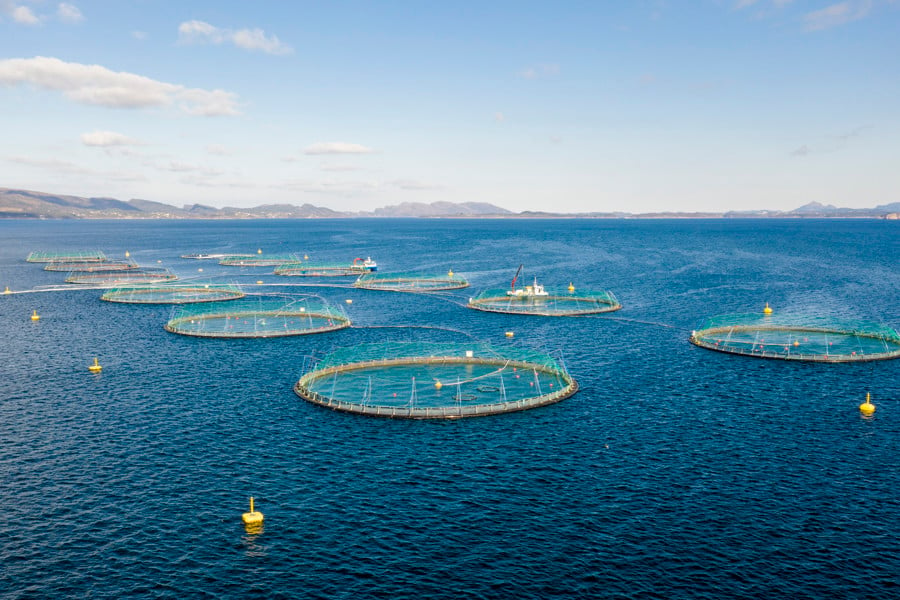
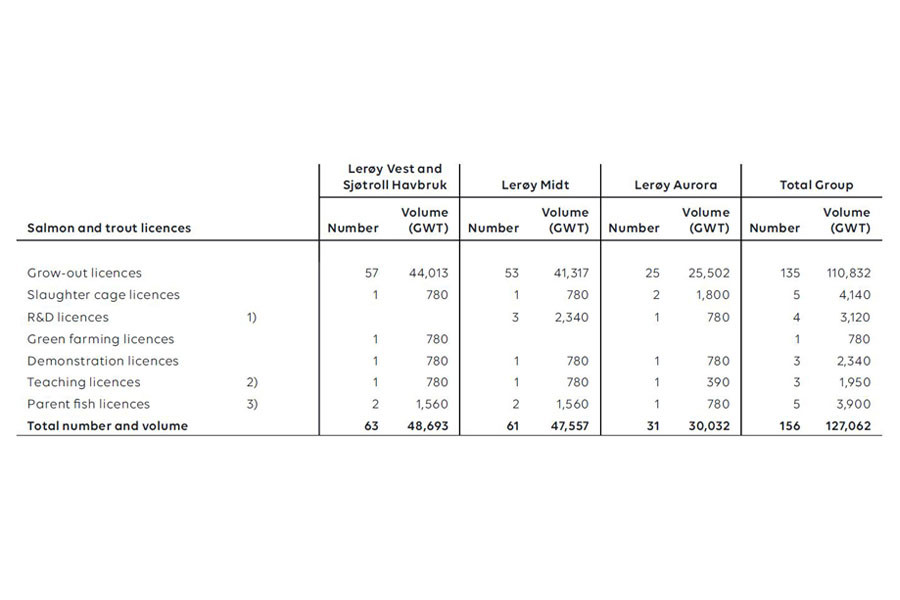
1) Research licences are time-limited with a duration of three years, from time of project start. The licences have zero purchase price, and therefore no depreciation. The R&D licence allocated to Lerøy Aurora in the table above legally belongs to Akvaplan Niva (third party), but is operated by Lerøy Aurora.
2) The teaching licences are considered time-limited with a duration of 10 years. The licences have zero purchase price, and therefore no depreciation. The teaching licence allocated to Lerøy Aurora in the table above legally belongs to Troms- og Finnmark Fylkeskommune (third party), but is operated by Lerøy Aurora. The licence allocated to Lerøy Sjøtroll legally belongs to Hordaland Fylkeskommune (third party), but is operated by Lerøy Sjøtroll.
INNOVATION THROUGH SPECIAL LICENSES
Lerøy Seafood Group operates several special production sites/licenses to assure innovation regarding sustainability.
The Group's goal is to minimize the environmental footprint of our operations. We only fish species from fish stocks that are appropriately managed, and we constantly strive to find working methods and equipment with minimal footprint.
Our aim is to avoid harmful impacts on species caused by intervention in the natural environment in fjord systems, including sedimentation/seabed’s.
Main goal: To be able to leave the area where we operate to the same condition as before we started our production.
KPI: Biodiversity
We operate in areas where wild populations of atlantic salmon also exists, and release of farmed salmon could interfere with the genetics of local populations.
We have implemented the NYTEK standard (minimum technical requirement) and we continuously work together with our suppliers to improve and develop new and better equipment. This is to ensure that all our farms have access to equipment of the highest possible technical standards.
Risk analysis and a number of written procedures helps us operate our farms safely, including to prevent escapes. Among other spesific measures, we regularly check the technical condition of moorings, facilities, vessels and equipment, we use divers and ROVs to check pen farming nets and employees are trained in prevention of escapes.
Actual incidents of accidental release triggers measures determined in the contingency plan and are reported to the Directorate of Fisheries, as are events that may lead to accidental release.
The organic and inorganic impact on the enviroment is considered to be negigible due to low number of escaped fish(4) in 2021
Policy: Escapes
KPI: Escapes
A very low number of fish escaped from the Group´s locations in 2021. The number was 4 fish, a decrease of 204 fish (98%) from 2020.
MAIN GOAL: 0 ESCAPES

These approvals are given after mapping and compliance of ecological status, spawning areas for marine species, diversity, and presence of endangered species in the region.
One of the assessments carried out both prior to approval for operations at a location and during fish farming at the facility is a MOM-B evaluation.
MOM-B stands for:
M – matfiskanlegg (production facility)
O – overvåkning (monitoring)
M – modellering (modelling)
A MOM-B evaluation is carried out by an independent third party body and involves extraction of samples from the seabed under and close to the cages in a facility.
The analysis has three components:
All parameters are allocated a score depending of how much the sea bed is affected by the organic substance. The distinction between acceptable and unacceptable sediment condition is set to the highest accumulation that allows burrowing benthic organisms to live in the sediment.
On the basis of these investigations, the individual location receives a score, which also provides an indication of when the next MOM-B investigation should be carried out. A poor score often requires more frequent seabed investigations than a good score. In addition to MOM-B, analyses are also conducted locally at individual facilities. These include measurement of density, oxygen level in the sea, currents, water quality, visibility, dives etc.
Each facility is also linked with neighboring facilities in a zone-based cooperation to work together on topics such as lice and preventing accidental release, prevent spread of disease, prevent outbreaks of disease etc.
MAIN GOAL: Average MOM-B max 1.5 per location (average score all surveys in calendar year for locations in operation that year)
KPI (2022): MOM-B score within 1 or 2 for all locations

The Group also conduct MOM C surveys. The C-survey is a trend monitoring of the bottom conditions in the transition zones from the farming zone and outwards in the recipient. This study is based on mapping of fauna on soft bottoms, which is carried out in accordance with relevant ISO standards.
In addition, hydrographic, geological and chemical support parameters are included. These extended trend monitoring outside the local areas is done as often as required, depending of environmental conditions, standard criteria and permit terms.
KPI: Biodiversity
Copper is a naturally occurring chemical element which can be toxic at high levels in the marine environment. Nets can be treated with antifouling agents containing copper. Also, cleaning of nets during the production cycle is necessary to ensure good water quality for the farmed fish. Lerøy Seafood Group uses low-pressure underwater washers to reduse copper release to the environment.
Together with suppliers, the Group works to identify alternative antifouling products and alternative net materials. Such alternative solutions are now in our “tool-box” for managing nets, and are implemented in the Group´s production strategies.
In addition to cleaning in-situ, all nets are cleaned at onshore sites after each production period. Onshore cleaning sites have zero copper emissions, as required by Norwegian legislation.
MAIN GOAL: Replace antifouling agents that contain copper
As a strategy to minimize infection pressure and environmental impact, all sites are fallowed and washed/disinfected every two years. In all regions where the Group has operations, fallowing and stocking periods are coordinated in zones, defined by the The Norwegian Food Safety Authority, NFSA and companies in each Area Based Management, ABM scheme.
Every site in a defined coordinated area is fallowed every second year for at least two months. Within each area-based management area, there is at least a one-month coordinated fallowing period every second year.
In 2021, every marine site was fallowed for more than four months (142 days) on average for the Group.
MAIN GOAL: Average fallowing per location: Minimum 60 days
Fallowed days in average per site
| Year | Lerøy Aurora | Lerøy Midt | Lerøy Sjøtroll | Total |
| 2021 | 135 | 153 | 139 | 142 |
| 2020 | 134 | 122 | 161 | 138 |
| 2019 | 227 | 121 | 126 | 140 |
| 2018 | 123 | 158 | 135 | 138 |
| 2017 | 92 | 204 | 125 | 132 |
| 2016 | 111 | 179 | 123 | 141 |
| 2015 | 84 | 94 | 120 | 105 |
| 2014 | 95 | 84 | 134 | 107 |
DENSITY
The maximum legislative limit for fish density in a seacage is 25 kg/m3. Average density in the Group´s cages is far below this, indicating that the fish have plenty of space in the cages. In 2021, the average density for the Group´s seafarms was 8,7 kg/m3.
Fish health and fish welfare are at the core of our operations as a producer of Atlantic salmon and rainbow trout. As such, we are committed to both ethical and statutory obligations governed by Norwegian legislation.
A healthy fish is also a good fish for production and a prerequisite for good financial results. There are therefore numerous incentives for putting fish health and fish welfare at the top of the agenda for fish-farming operations. In an effort to ensure that we continuously fulfill these obligations, the Group has chosen to invest substantial resources in preventive measures for fish health, and this is a major part of the production strategy for the entire Group.
MAIN GOAL DENSITY: Less than 25 kg/m3
| Row labels | Lerøy Aurora | Lerøy Midt | Lerøy Sjøtroll | Grand Total |
2021 |
||||
| Jan.2021 | 8,6 | 9,4 | 8,7 | 8,9 |
| Feb.2021 | 8,8 | 9,4 | 8,6 | 9,0 |
| Mar.2021 | 8,9 | 9,4 | 7,8 | 8,6 |
| Apr.2021 | 8,5 | 9,3 | 7,1 | 8,1 |
| Mai.2021 | 7,4 | 10,0 | 7,2 | 8,2 |
| Jun.2021 | 8,3 | 9,9 | 7,3 | 8,4 |
| Jul.2021 | 8,6 | 9,5 | 8,1 | 8,7 |
| Aug.2021 | 9,1 | 9,2 | 8,1 | 8,7 |
| Sep.2021 | 8,8 | 9,5 | 8,5 | 8,9 |
| Okt.2021 | 9,2 | 10,0 | 8,5 | 9,2 |
| Nov.2021 | 7,6 | 9,5 | 8,8 | 8,7 |
| Des.2021 | 7,0 | 9,7 | 8,9 | 8,7 |
| Grand Total | 7,0 | 9,7 | 8,9 | 8,7 |
We care about the welfare our fish and accept our ethical responsibility that comes with animal farming. The Group's goal is qualitative and requires continuous monitoring and targeted efforts throughout our farming value chain.

Our fish welfare initiatives are comprehensive and cover every part of our farming value chain.
Mandatory fish welfare training for all staff comprise legislation, animal welfare, fish health biology, stress, sedation and euthanasia. Other topics covered are natural behavior, environmental requirements, water quality and physiology. Based on this knowledge, staff are also trained in internal fish handling protocols/handling policies.
Welfare indicators are used throughout the production cycle. At harvest stations, welfare indicators are used to monitor the fish prior to, and after stunning and bleeding. All our harvest stations use either electrical or precussive stunning for anaesthesia. This precude is then followed by bleeding the fish. Bleeding is performed either manually or robotic. Indicators such as eye reflex and operculum movements are monitored and recorded daily. The effect of anaesthesia and bleeding is monitored, and in case of insufficiant effect, a reserve system is used.
In case of loss of power, an emergency power supply will help evacuationg the fish from the rig.
In case of the need to euthanize fish on the farmsite, the fish is anaesthetized with an approved medicament or by percussion. Farm personell are trained in fish welfare at least every 5 years. In addition, they are guided by fish health professionals, who visit the farm at least monthly.
During transportation of fish in well boats, there is implemented a risk based water quality monitoring and control program. This continous monitoring includes parameters such as temperature, dissolved oxygen and pH. Limits are set according to duration of transport, density in tanks and size of the fish.
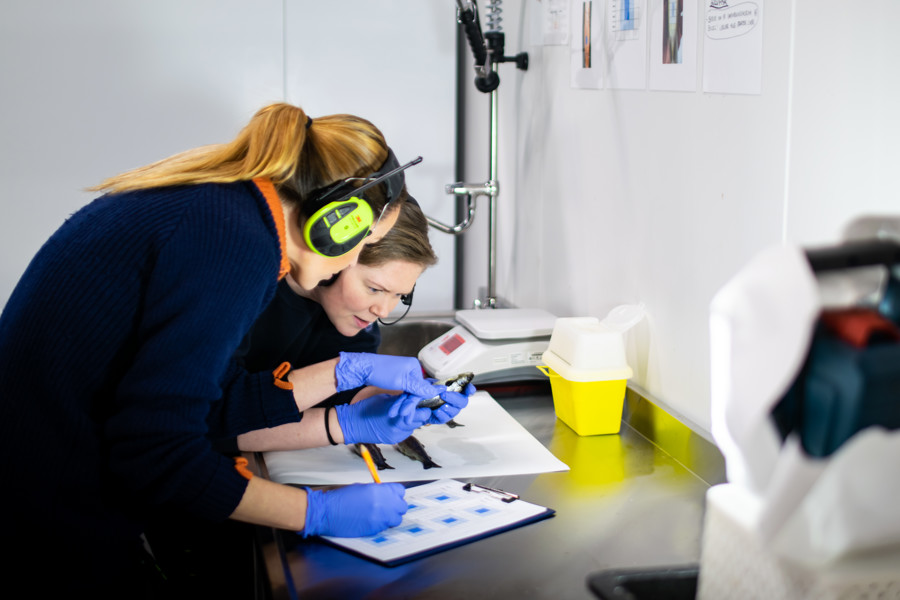
The Group strive to minimize handling operations of live fish. As little handling as possible improves fish health and welfare , which is an important objective for the Group.
We use procedures as management tools for our production. The procedures help us to standardize events at each life stage, and they are updated as soon as we gain new crucial knowledge regarding fish welfare. In this way, the entire organization acquires the new knowledge quickly and efficiently.
Smolt:
Pumps, transportation pipes, sorting equipment and vaccination equipment are checked at regular intervals and any damage or defects are repaired before use.
During major operations such as vaccination and sorting, the fish is checked for any damage at regular intervals to detect any defects of equipment.
All components used during sea transfer are checked regularly. If situations arise where an increased incidence of mechanically inflicted damage is registered, delivery is stopped until the cause of the damage has been investigated and corrected.
Ongrowing stages:
During sea transfer, dead fish are controlled for mechanical damage that may have been inflicted in connection with the transport. If it turns out that there is presence of mechanically inflicted wounds, a review of the delivery process will be taken.
When fish are crowded during various forms of handling, we have our own handling policies describing how this is to be carried out to ensure fish welfare.
In all non-medical lice treatments, welfare screening of the fish is performed before and after it has been treated. In this way, we have documentation of the impacts for the fish, and whether measures may need to be taken to reduce the negative consequences or not.
CLEANER FISH
The company produces around 10 million Lump sucker per year. This implies a high ratio of self-supply, which in turn ensures predictability for deliveries and enables us to control targeted improvement measures, aiming to ensure predictability and biological improvements for production.
Welfare for cleaner fish has been debated for some time, and we acknowledge the challenges involved in farming cleaner fish. At the same time, we are aware that our measures are moving us in the right direction, biologically.
Our onshore production facilities have implemented improvement measures within operations and biosafety, providing significant improvements to biology and cleaner fish welfare.
These measures encompass a wide range and comprise of:
After transfer to salmon production sites, when the cleaner fish perform their function by eating salmon lice, we continue to experience challenges. The causes of terminal losses are dominated by bacterial disease.
Measures to improve welfare are:
Additional, we aim to not use more cleanerfish than necessary for lice management.
We provide a (at least) monthly health assessment, performed by authorised animal health personnel. Cleaner fish in the harvest stations are anesthezised and euthanized.
MAIN GOAL: Work for a better survival rate after transfer to salmon production sites.
MAIN GOAL: No disease and good fish welfare
Links
POLICY: Fish health and fish welfare
ZONE COOPERATION 100%
All of our on-growing sites take part in a zone - based cooperation with other farmers. In all regions where the Group has operations, fallowing, washing/disinfection and restocking are coordinated in zones every second year. This cooperation also involves coordination of operations, collaboration relating to lice, disease management and other issues where the solution to the problem requires a joint, coordinated effort.
R&D PROJECTS WITHIN FISH WELFARE AND FARMING
The group participates in many different research projects in order to be at the forefront in terms of the best possible fish health and to implement new technology and expertise as soon as possible.
The various projects can be roughly divided into 3 different areas:
Most of our ongoing projects will fall into one of these groups.
Exsamples: Oxygenation in seacages, Feeding and cardiomyopathi syndrome, Wounds in smolts, Vaccine trials, Fish welfare indicators and thecnologicel measurment, Bacterial wounds in salmon ongrowing, Wounds in postsmolts, Sceletal deformities in trout, Health and growth in smolts.
DISEASE MANAGEMENT
Disease management is of essential importance for all animal farming. Within the Group, disease management is based on a preventive operational practice, where the primary goal is to prevent problems before they occur.
Our work on disease management is based on recognized principles. These are in turn based on biological know-how and attitudes, in which training for our employees and a live internal control system lay the foundations for operations.
Disease prevention and management are monitored by fish health professionals (authorized animal health personnel), who also play key roles related to Lerøy's continuous learning and development of best operational practice.
We aim to farm fish under production conditions that safeguard the biological requirements of all species. Density and water quality parameters, such as temperature, salinity and oxygen shall be adapted to the requirements for fish at different life stages. We operate a specific vaccination program and vaccinate all our farmed fish before sea transfer.
The main target for fish health and welfare is to increase fish survival rates throughout the production value chain. Salmon mortality rates due to viral diseases has decresed by 19,4% during the last two years. All employees involved in handling live fish undergo training focusing on fish welfare.
Fish welfare is developed and monitored by keeping use of medicines to a minimum, with careful assessment of use, using only approved medicines which have documented environmental impact in accordance with the requirements of The Norwegian Medicines Agency, monitoring and documenting tolerance, and following up biological feed factors.
Use of medication
Medication is used only when this is deemed appropriate and necessary.
We exclusively make use of licensed products, and all medicine prescriptions are issued by authorized animal health personnel. Lerøy Seafood Group currently employes 20-30 fish health professionals (authorized animal health personnel).
Chemical used in delousing, active agents (kg) per ton gross weight
| Year | Via feed (kg) | Via bath (kg) | Hydrogen peroxide* (kg) |
| 2021 | 0.000062 | 0.014 | 8.72 |
| 2020 | 0.0001 | 0.00012 | 5.3 |
| 2019 | 0.000149 | 0.000030 | 2.5 |
| 2018 | 0.000023 | 0.000003 | 6.11 |
| 2017 | 0.000162 | 0.000076 | 1.83 |
| 2016 | 0.00160 | 0.000547 | 18.40 |
| 2015 | 0.00132 | 0.001361 | 50.45 |
| 2014 | 0.002474 | 0.003034 | 40.87 |
| 2013 | 0.00006 | 0.002321 | 4.35 |
Link
Policy: Use of medication
Antibiotics – policy, goals and results
Lerøy Seafood Group avoids unnecessary use of all antibiotics, including MIAs, CIAs and HPCIAs and veterinary antibiotics, in production of all fish for consumption. We aim to achieve this goal via organization-wide measures involving disease management, including preventive operational practice, 100 % vaccination, early diagnosis and appropriate measures to handle outbreaks.
Antibiotics are seen as the last resort, only applied in situations where use has been assessed by veterinarians as necessary to handle a confirmed disease-related situation. The Group´s policy on use of antibiotics is compliant with WHO (World Health Organization) guidelines on use of Medically Important Antimicrobials in food producing animals and the WHO list of Critically Important Antimicrobials for Human Medicine.
The Group has specifications for special brands telling that there is not used any kind of antibiotics during the production time. These brands are certified by a 3rd party.
MAIN GOAL: 0 use of antibiotics
Use of antibiotics for salmon and trout farming was 0 (zero) in 2021.
Risk assessment and measures are in place to prevent any risk of employees developing antibiotic resistance.
Links
Policy: Use of medication
KPI: Use of medication
The use of antibiotics is close to zero in the Norwegian fish farming industry. Lerøy Seafood Group applies a very restrictive policy when it comes to use of antibiotics, and use is only on exception and to safeguard fish health.

The Group´s efforts to control salmon lice follow the principles of an IPM strategy to control salmon lice and keep the numbers at a low level in the long term. The overall goal is to reduce any negative impact on the environment and the need for active interventions.
The overall principles underlying this control strategy includes establishing acceptable levels (see details in Policy), preventive measures (as structural measures relating to use of locality, coordinated operations over larger geographical areas, zone collaboration, fallow periods in between production cycles, smolt quality and smolt weight as measures to reduce period of exposure, use of various types of physical barriers), monitoring, biological control and active interventions.
We work to minimize levels of adult female lice per fish.
MAIN GOAL PER FISH 2021: 0,11 (average per fish throughout the year)
Result: 0,18
The level of sea lice has been relatively stabile the last years. Many biological and environmental factors influence the levels of sea lice, and 0,18 is still a nacceptable level, even though the main goal was not achieved for 2021.
KPI 2022: No exceedances of government limits
Limits for levels of adult female lice per fish set by the authorities varies throughout the year and differ depending on region. This is described in detail in the Group´s Policy for control of sea lice.
Links
Policy: Control of salmon lice
KPI: Sea lice


Lost fish is undesirable both from a fish health and welfare perspective and from a financial perspective. Thus, our goal is to get as many individuals as possible throughout the whole production phase from egg to slaughter. Farming robust smolts, good husbandry, disease control and careful handling are key factors. Se Policy for more details.
MAIN GOAL: Survival in sea, last 12 months according to GSI: 94.5%
Result 2021: 92,5% Different biological factors contribute to the result, and these factors vary from year to year.
KPI (2022): Survival of farmed groups: 89%
Departments in the Group´s Farming division, contributes to the work to achieve the main goal, by identifying and working towards their own spesific goals for survival. This includes land- and sea-farms. Salmon mortality rates due to viral diseases in sea has decresed by 19,4% during the last two years.
Links
Policy: Fish health and fish welfare


Certification
Contribute to the long-term sustainability and improvements of global fish resources.
Our operations within fisheries are based on fish as a natural resource. We therefore rely on proper management of the various species in the sea. Limitations on the harvest volumes of individual fish stocks come from Mother Nature herself.
Information on fishing volumes (catch statistics), monitoring of fish stocks and estimates provided by researchers from numerous countries all form the basis for the fishing quotas established.
MSC (MARINE STEWARDSHIP COUNCIL)
The MSC recognizes well-managed and sustainable fisheries through a certification programme. The MSC sets principles and criteria for sustainable fisheries which are used by a third party and voluntary certification programme.
The MSC recognizes well-managed and sustainable fisheries through a certification programme. The MSC sets principles and criteria for sustainable fisheries which are used by a third party and voluntary certification programme.
These principles are:
Lerøy’s strategy is to support well-managed and sustainable fisheries and increase the share of certified fish.
MSC-certification of cod & haddoch within 12 nautical miles lost its certification in 2021 while outside 12 nm is still valid. There is considerable effort from the Norwegian fisheries management authorities to address the management of the coastal cod fishery. Its unknown when MSC certification within 12 nm will be obtained, but can take several years.
Lerøy with its integrated value chain will be less affected by the fact that haddock within 12 nautical miles will not receive an extended MSC certificate. Several of our purchasing and production facilities are located in Finnmark, the most northern part of Norway that are closest to the fishing banks outside 12 nautical miles. They are all suited to buy fresh fish caught outside of 12 nautical miles from both external Lerøy partners as well as fresh and frozen fish from our own trawler fleet in Lerøy Havfisk.
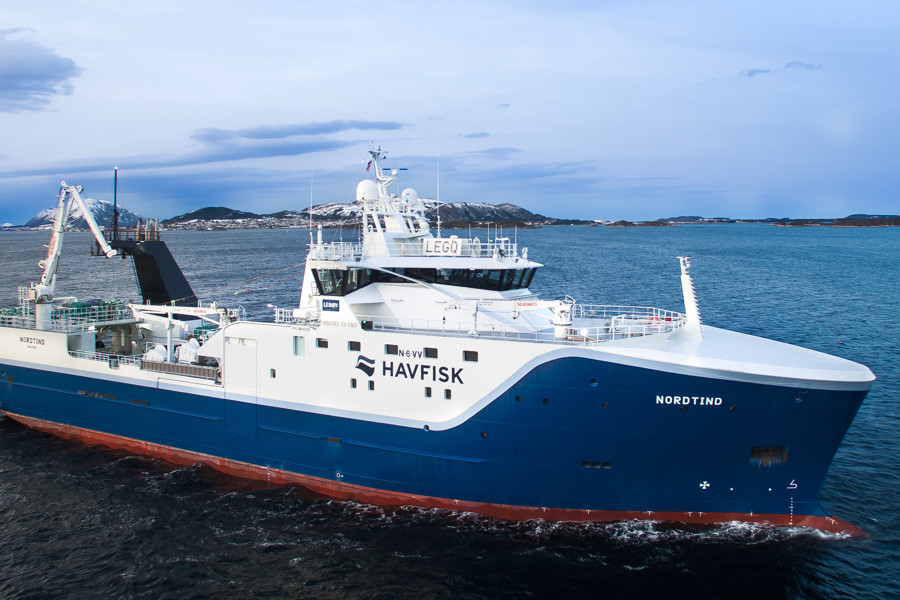
Sustainable management is central to the Norwegian fishing industry, and includes biological, social and economic sustainability. Biological sustainability means that marine resources, such as fish stocks, must be utilized in a way that allows them to continue fishing into the future. This is managed by means of quotas to avoid overfishing, and these are based on stock surveys that are done every year. Social sustainability is about the distribution of resources between different actors, such as the coastal and ocean-going fleets, or between different regions along the coast. Economic sustainability means that fishing is economically profitable, so that fishermen earn enough to live, and that the nation of Norway earns from exporting seafood
Advice and recommendations from ICES form the main basis for setting fishing quotas. Researchers from the member countries prepare the various councils in groups and advisory committees. After ICES has come up with its quota recommendations, it starts negotiations between Norway and other states. When the international negotiations are completed, start the national regulatory processing process. The Directorate of Fisheries makes proposals to the national
the regulation.
Norway is a member of five regional fisheries management organizations (RFMOs). These are the Northeast Atlantic Fisheries Commission (NEAFC) and the Northwest Atlantic the Fisheries Organization (NAFO). Norway is also a member of the Southeast Atlantic Fisheries Organization (SEAFO), the International Commission for the Conservation of Atlantic Tuna (ICCAT) and the Convention of the Conservation of Antarctic Living Marine Resources (CCAMLR).
We depend on sustainable management of marine natural resources and maintenance of clean and productive marine areas. In our main operating area, more than 90% of all Norwegian wild fish landed annually are certified as sustainable according to MSC-certified sustainable fisheries. Main catch species for Lerøy Havfisk is cod, haddoch, saith and shrimp mainly caught in the North Sea, Norwegian Sea and Barents Sea
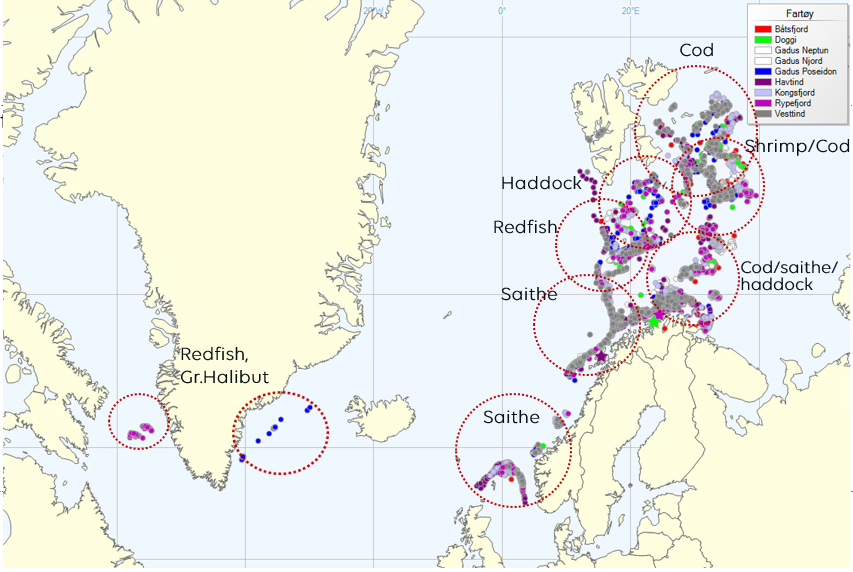
Research and advice from the Institute of Marine Research in Bergen and the International Council for the Exploration of the Sea (ICES) shall help ensure that future generations are able to harvest the major assets in the sea and along the coast.
One of the vessels owned by our subsidiary Lerøy Havfisk is part of the Institute of Marine Research's reference fleet. As such, we play a part in collecting a significant amount of biological data utilised in the research into fish stocks. Norway enters into negotiations with other countries when total fishing quotas are to be established. The final decisions regarding the total quotas for fishing different species are made on the basis of stock assessments and advice on quotas from ICES.
More than 90% of the fish resources harvested by Norway are managed in cooperation with other countries. The national quotas in Norway are discussed by the various stakeholders during regulation meetings, for which the Norwegian Directorate of Fisheries is responsible. These regulation meetings are held twice a year.
Subsequent to the discussions at these meetings, the Directorate of Fisheries issues a proposal for regulation of fisheries to the Norwegian Ministry of Trade, Industry and Fisheries. The Ministry issues provisions regarding the distribution of quotas to Norwegian fishing vessels and provisions regarding fisheries in the form of annual regulations for each species of fish.
Our operations are based on public permits for the harvesting of Norwegian fish resources. The entitlement provided by these permits entails statutory obligations in terms of activity and delivery, as well as a responsibility to fish sustainably. It is our aim to be a “proud custodian”, and we have taken an active approach to ensuring full compliance with all regulations involving fisheries.
We manage our natural resources on behalf of society as a whole, and therefore accept a particular responsibility for ensuring sustainable operations, leaving behind the smallest possible environmental footprint. The Group monitors all employees and management to ensure compliance with prevailing regulations and quota provisions. The Group has also cooperated with authorities, trade associations and nongovernmental organisations to help counteract illegal fishing, thereby safeguarding resources for future generations.
In 2016, Lerøy Havfisk and the other parties involved in the Norwegian trawling industry entered into the Arktisavtalen (Industry Group Agreement on cod fisheries in the northern part of the North-East Atlantic). As a result of the melting ice sheet around the North Pole and so-called new areas becoming accessible, a map has been prepared showing those regions traditionally fished.
The parties to the agreement committed to not fish in waters north of these areas until the seabed had been charted andit had been established that fishing would not cause permanent damage to vulnerable benthic biotopes. In 2019 this agreement was replaced with new Norwegian government regulations to the same effect.
The regulations were implemented following open dialog between Government, industry and NGOs. In addition to the vast areas protected under the new regulations, there are 19 areas along coastal Norway that are protected against bottom trawling to protect coral and other benthic organisms. Additionally, trawlers are not allowed to fish inside of 12 nautical miles along the entire Norwegian coast, with the exception of small trawlers that have a 6 mile limit. Around all of the Svalbard islands there is a 12 mile limit.
Areas protected in the Norwegian economic zone Source: The Norwegian Fishery Directory
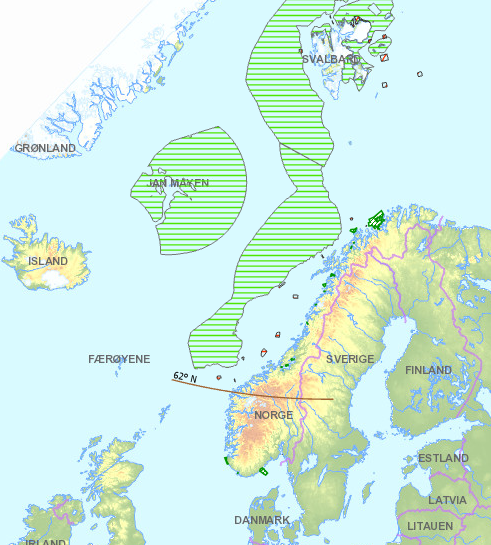
Combined with a more comprehensive nature reserve where fishing is prohibited and a general prohibition on fishing in waters that are shallower than 100 metres around Svalbard, the protected area covers 70.000 square kilometres, not including all before mentioned new protected areas.
The minimum water depth of 100 metres protects food sources for animals that live on shore and birds that dive for food close to the coast. A number of other regulatory measures also apply,including a prohibition on fishing deeper than 1.000 metres to protect potentially vulnerable benthic biotopes in these areas.

Parts of the fishing gear used by Lerøy Havfisk consist of plastic and plastic components. Lost fishing gear left on the seabed spoils the sea and destroys seafood caught in it. Ever since the early 1980s, the Directorate of Fisheries has carried out annual clean-ups along the Norwegian coastline, to remove fishing gear from the seabed – an important measure to avoid fish and shellfish getting caught, or "ghost fishing" as it is called. Furthermore, this represents general marine pollution.
For the most part lost fishing gear or "ghost fishing" is represented by gill-nets, a fishing gear not used by the Lerøy Havfisk fleet. Fortunately, it is not often that Lerøy Havfisk loses its fishing gear, but it has happened. Marine fisheries, including Lerøy Havfisk, are required by the Exercise Regulations to report lost gear to the Norwegian Coast Guard, and in recent years reporting has been further simplified through functions in the electronic catch log.
Lerøy Havfisk will continue to spend time searching for any lost fishing gear, and we most often succeed in finding and recovering lost fishing gear. This in turn represents reduced consumption, and will at all times be included as part of the company's action plan for reduced plastic consumption (provided that fisheries, ropes, etc. contain plastic and plastic components).
In addition to production of Lump Sucker, the Group also buys wrasse from local fishermen. As part of our sustainability efforts, we have decided to demand two things from fishermen who supply Lump Sucker to us.

As a general rule, our activities shall not impact on any other species or protected habitats. We only fish species that are properly managed and seek to use the equipment that is best for different species and habitats at all times. Despite this, we may experience unintentional by-catches. These are managed, recorded, reported and delivered to shore.
In aquaculture, we take a special responsibility for wild salmon as it lives naturally in Norwegian rivers. We participate in various interest groups working to safeguard the wild salmon in Norway.
Our different sites have a predator management system and keep records and report risk events, e.g., net holes, infrastructure issues, handling errors, reporting and follow up of escape events.
Lerøy Havfisk trawl fleet fishes with bottom trawls and predominantly catches their catches in the Barents Sea and north of Svalbard. This fishery is considered to be one of the best regulated fisheries in the world, and most of it is certified by an independent third party (MSC) as sustainable fishing.
Bottom trawling takes place in the same areas year after year, mostly in large deep or already well-established fields and in fields with generally low levels of organic material, with gravel and sandy bottoms, where there are few sediments that bind CO2.
To minimize the impact on the seabed Lerøy Havfisk use rubber balls (bobbins) to keep the trawlbag at the buttom, rubber bobbins is less damaging to the seabed than steel bobbins. In addition Lerøy Havfisk use semipelagic doors insted of buttomthrawl doors, semipelagic doors weight less and put less force on the seabed.
To avoid catching small fish Lerøy Havfisk use a sorting grid, which sort smallfish out of the trawlbag. Different sensors on the bag give indication how much fish that is caught.
Large sea areas (more than 40%) in the Norwegian economic zone are already voluntarily protected through an agreement to refrain from fishing in areas where there had previously been no trawling activity.
We have also committed ourselves not to increase trawling activity in the vulnerable areas that become available when the ice retreats due to climate change, until research and management have mapped the bottom conditions, vulnerability and opportunities for sustainable fishing. This is a result of good cooperation between NGOs, the fishing industry and the administration.

The plastic waste is a threat to all wildlife in the sea. It is found on the surface and right down to the deepest of the world's oceans. During the past year, plastic seeding of the ocean has gained significantly increased attention.
The Group`s activities is based on life in the sea and we depend on the sea being properly managed. It is therefore important to give priority to preventing plastic seepage from the seas.
Links
Policy: Plastic
KPI: Plastic

The Group have several efforts regarding plastic. The latest is the project called 50/50-5. In this project the Group has set a goal to reduce the use of non- recyclable plastic by 50 %. You can read more about this in the next chapter.
Fishing for litter. Our sea waters and coast are increasingly littered with vast volumes of man-made waste. Pieces of plastic, rubber and other non-degradable materials may remain in the environment for hundreds of years, causing harm to animals and humans.
Lerøy Havfisk’s fleet is involved in the “Fishing for litter” project, a voluntary environmental project to clear up marine waste from the sea, led by the Norwegian Environment Agency. The aim is to send as much of this waste as possible for recycling, by facilitating sorting, registration and recycling of all waste collected.
Read more: Removing plastic and waste from our seas
Microplastics. Microplastics in the sea remain an area where we lack information about quantities and consequences. The Group participates in various R&D projects, which focus on establishing a recognised method for analysing microplastics in fish and also experiment to identify activities that affect the level of microplastics in the sea.
